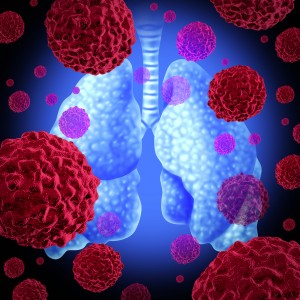 In a recent study entitled “Early stage lung cancer detection in systemic sclerosis does not portend survival benefit: a cross sectional study,” the authors characterize lung cancer profiles in Systemic sclerosis patients. The study was published in the journal Plos One.
In a recent study entitled “Early stage lung cancer detection in systemic sclerosis does not portend survival benefit: a cross sectional study,” the authors characterize lung cancer profiles in Systemic sclerosis patients. The study was published in the journal Plos One.
Systemic sclerosis (SSc) is an autoimmune, systemic disease characterized by accumulation of collagen resulting in thickening of the skin often progressing to internal organs, such as the lungs. Notably, pulmonary dysfunction is the leading cause of SSc-related mortality with several studies reporting that SSc patients have a significantly increased risk for lung cancer. However, detailed molecular characterization of SSc-related lung malignancies is currently lacking.
In this retrospective study, researchers reviewed all cases of lung cancer (or pulmonary nodules) in patients diagnosed with SSc within The Northwestern Memorial Healthcare dataset. The data was collected from the centers’ electronic repository (The Northwestern Memorial Healthcare Electronic Data Warehouse, EDW), followed by an analysis of patient data and later compared to the National Cancer Institute SEER Cancer Statistics (NCI SEER) results.
In total, the authors identified 17 patients with SSc and lung cancer (a majority of females, at 82%). Smoking was only registered in 65% of the cases, while in the SEER Cancer study the smoking rate reached 80%. However, prevalence of lung cancer in Northwestern Scleroderma Registry patients was higher when compared to the results obtained for the US general population in the SEER study, reinforcing that SSc is indeed a risk factor for lung cancer, independently of smoking habits. The presence of autoantibodies (i.e., those that are produced by the immune system and are targeting one or more of the individuals’ own proteins) has been suggested as a potential mechanism for tumorigenesis. According to other reports, the team found Scl-70 antibody levels were significantly higher in their SSc patients’ cohort, with 50% of patients being Scl-70 positive.
[adrotate group=”8″]
The team identified an earlier detection of lung cancer in their patients when compared to general population (lung cancer data from the SEER study), with 81% of patients presenting lung nodules in CT scans even before the cancer diagnostic. The authors highlighting of these results, together with the fact that 12.5% of patients lung cancer diagnoses were performed with initial CT scans, show the importance of CT scans in patients with SSc (particularly, those with a smoking history). However, despite the early detection, SSc associated lung cancer patients have lower survival rates. The most predominant histological cancer pattern observed in SSc associated lung cancer patients was adenocarcinoma, probably due to higher levels of inflammation and fibrosis associated with SSc. These were identified to harbor KRAS mutation and EGFR mutation in 25% and 10% of the cases, respectively.
In conclusion, the authors emphasize their study is the first to identify molecular markers in SSc associated lung cancers. Additionally, they report a higher proportion of adenocarcinomas, which despite detected at earlier stages, did not result in increased survival rates. The authors noted their results suggest screening CT scans should be a standard practice in all SSc patients.

